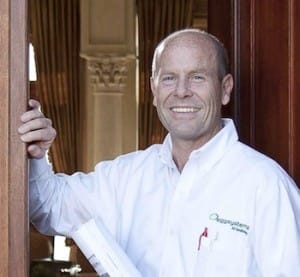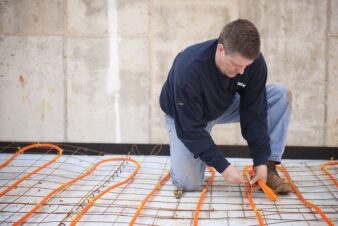 A primer on geothermal incentives
A primer on geothermal incentives
What do you know about incentives for geothermal HVAC systems? You are going to be surprised. Here are some possible benefits you may be able tap into:
- Residential –
- Federal tax credit of 30%, uncapped
- Commercial –
- Federal tax credit of 10%, uncapped
- Maximum Accelerated Cost Recovery System (MACRS) – benefit up to 38% uncapped
- Everybody –
- Property Assessed Clean Energy (PACE) funding – funds entire geothermal HVAC projects for property taxpayers
- State and local government incentives (various by region)
- Utility incentives and funding (On-Bill Financing)
- Geothermal utility services (ORCA Energy)
Many of the incentives/benefits cover the entire cost of a new geothermal HVAC system, or retrofit/improvements to an HVAC system. These improvements can include the following costs:
- Geothermal source (ground loop/pond loop/class V well system or standing column well)
- Geothermal heat pump equipment
- Ductwork and specialties
- Controls and indoor air quality (IAQ) items
- Electrical service connections
- Excavation & recovery costs
- Engineering and drawings, permits and fees
Federal incentives for geothermal HVAC systems that are currently in effect through the year 2016 include different criteria for commercial and residential.
If your customer is residential, all they need is to be a taxpayer and fill out a form IRS 5695. They will get 30% of the entire cost of the geothermal HVAC system back in direct tax credits, which can be rolled over from year-to-year until they get the full incentive. For simple math, a $30,000 HVAC system will receive a $9000 tax credit, on their very next tax filing, through 2016.
If your customer is a commercial entity that owns his commercial property, that entity receives a 10% federal tax credit. The deal sweetens when MACRS (item” 2a” above) is applied. The geothermal HVAC system is depreciated in an accelerated manner from 27 years down to an abbreviated five years. 50% bonus depreciation is also applied the first year; a huge plus. This 50% bonus has been extended and modified several times since 2008, most recently in January 2013 by the American Taxpayer Relief Act of 2012. By taking advantage of the commercial/corporate geothermal HVAC tax credits and incentives, an expenditure of $1 million for a geothermal HVAC system will net tax incentives amounting to $480,000 over five years under current program guidelines. A 48% tax incentive for corporate clients is clearly favorable to the 30% tax credit for residential clients.
PACE (item 3a above) is a federal program currently available in 31 states designed for residential and commercial consumers. The program works best for commercial customers in participating areas. PACE is arranged by local government and pays for 100% of the project’s costs, and is paid back through property tax assessments. Though PACE is available for the residential sector also, the housing market reverses in 2010 brought that funding to a halt. Commercial PACE programs have accelerated, and as of February 2013, 16 commercial PACE programs in seven states are accepting applications to fund geothermal HVAC and other energy efficiency projects.
On – Bill financing provides a way for consumers to repay the capital costs of geothermal HVAC systems retrofit as part of their monthly electric bill.
Electrical service providers have made energy efficiency retrofits available to consumers for years. The utility companies use their reserves to cover the cost of the efficiency upgrade projects. Consumers are then obliged to pay the costs back over a period of 20 years on their electric utility invoice. These programs seem to be gaining favor and continue to grow.
Third-party capital providers have emerged with programs such as “In – Electric Rate Funding,” introduced in January, 2013 by Constellation Energy.
Geothermal Utility Services are a promising program that has been party to a market penetration of almost 40% of heating system replacements in Canada in 2011 according to the Canadian GeoExchnage Coalition. Geothermal Utility Services such as OrcaEnergy cover the cost of the exterior geothermal ground heat exchanger/well system, and then the consumer pays a one-time connection fee and a predetermined monthly utility charge to the geothermal utility. The consumer is then only concerned with the cost of the geothermal heat pump upgrade, and is still eligible for many of the other programs mentioned, including the federal tax incentives (US).
You can see that we are in a favorable market with the many incentives for the implementation of geothermal HVAC technologies. It does take a little legwork on the part of the contractor, engineer, and consumer. Contractors that up-sell to geothermal HVAC have all of this these resources available to them. I’m interested in hearing what you think: which programs mentioned here are you likely to use?
– Jay Egg is a geothermal consultant, writer, and the owner of EggGeothermal. He has co-authored two textbooks on geothermal HVAC systems published by McGraw-Hill Professional. He can be reached at jayegg.geo@gmail.com.




Join the conversation: